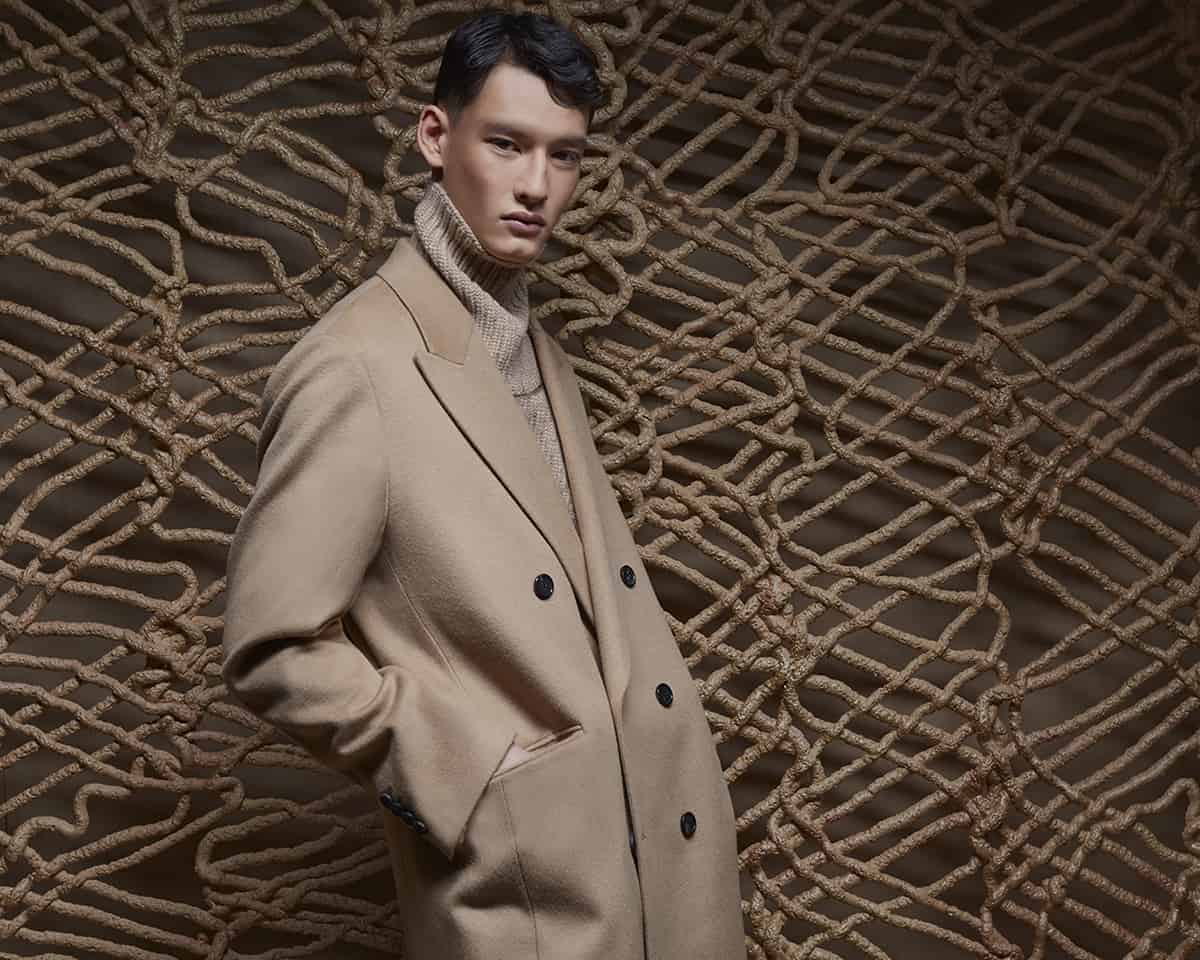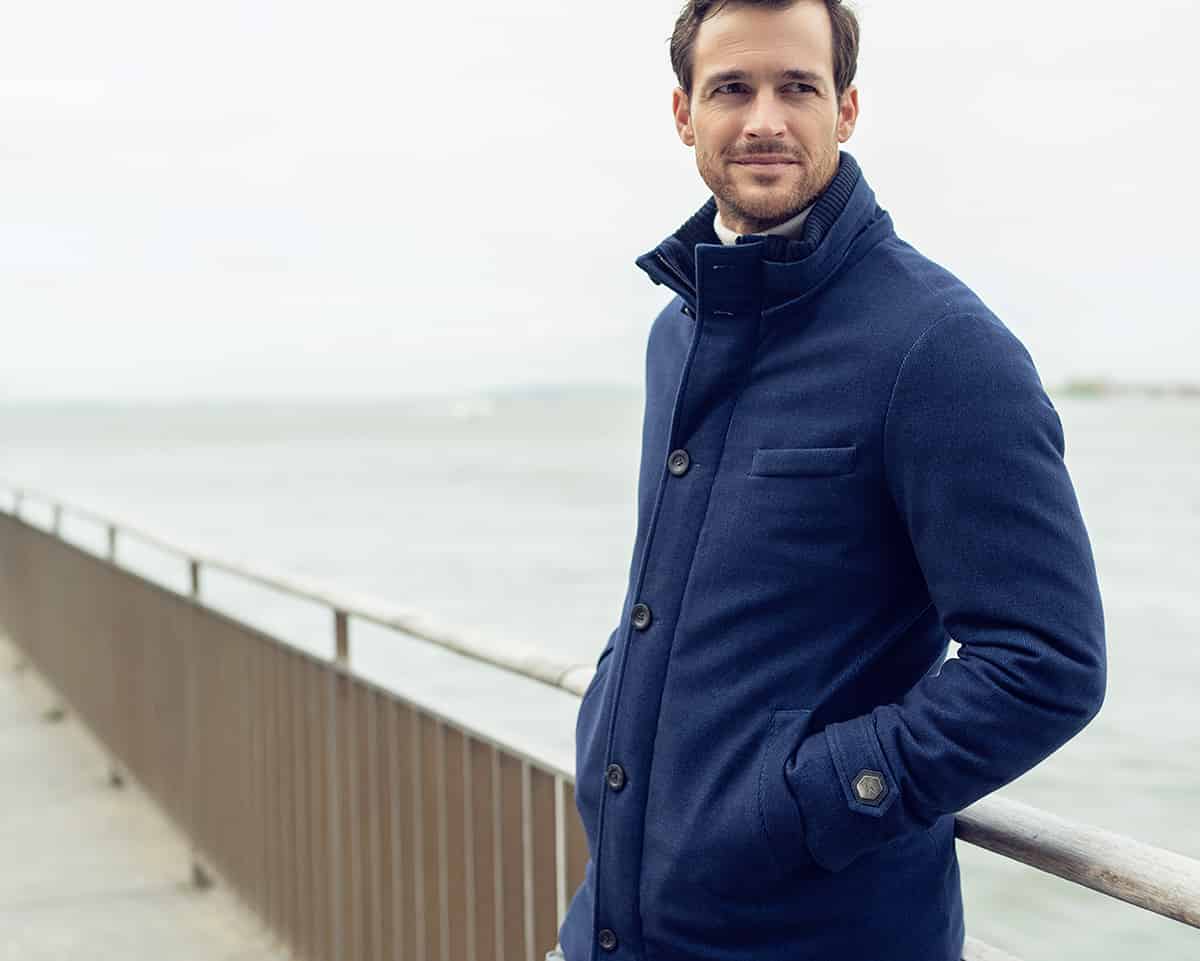INSIDE OUTERWEAR: FASHION RULES FOR FALL 2023

If you haven’t already gotten your copy of MR Magazine’s January 2023 issue, never fear! We’ll be posting every article right here on MR-mag.com over the next week or so. You’ll also be able to pick up a copy at most of the menswear trade shows coming up in January, but be sure that we have your name on our mailing list for future issues by completing the form at the link here.
RETAIL STRATEGIST AND former Saks VP Tom Ott recently posted about the dangers of understocked selling floors, a common sight this holiday after bloated inventories in October/November. “Holding off on new receipts is never the answer,” Ott maintains. “Sometimes you need to buy your way out of an issue to create buzz and excitement for the customer.” He goes on to question why retailers don’t bring in outerwear after December since about 40 percent of coat business occurs between January and April. “Work with your resources to hit end-of-season numbers and deliver fresh new goods for Feb 1. Works like a charm: When the snow starts flying, coats do also.”
Acknowledging that outerwear business is weather-related, most retailers have nonetheless noticed that, today more than ever, purchasing is also driven by fashion. With offices opening up and men opting for more presentable office attire, they’re increasingly looking for outerwear long enough to cover their suit jacket or sportcoat. Clearly, many are buying fashion-forward outerwear to elevate their image at work.
Fred Derring from DLS explains it well: “Outerwear has grown post-pandemic thanks to more eclectic dress codes for men. Outerwear is now replacing the sportcoat, with guys wearing stylish coats, jackets, and vests with a turtleneck, or with a woven shirt and tie. They’re wearing lightweight wool pieces indoors as well as out. These days, it’s about fashion and unique items more than keeping warm.”
In fact, strong early fall ’22 outerwear business in many parts of the country had less to do with the temperature and more with the extent of fashion placed for early delivery. Sophisticated topcoats, classic peacoats, ‘teddy bear’ faux sherpas, plaid and patterns, sherpa-lined flannels, quilted vests, rugged shirtjacs all sold well in September/October, while basic puffers and heavyweight parkas proved disappointing.
“I continue to see customers searching for versatility and timeless style,” says Todd Christiansen from Journeyman, a menswear store opened four years ago in Madison Wisconsin. “They want jackets that deliver performance for a day hike, but stylish enough to wear to dinner. Ease of layering is key. As temperatures go up and down, having a coat that can adapt is very important. I’m finding that bulky (heavily insulated) coats have been downtrending. At the same time, shirt jackets are increasingly substituting for outerwear. From fleece-lined chore coats to down-insulated CPO shirts, these items can be dressed up or down. Again, versatility is key.
“Looking to Fall 23, I’ll continue to focus on key item jackets that offer timeless style but give the customer many wearing options. When you spend more money on something, you want it to stay in style and perform. In addition, I’ll be adding some pinnacle pieces, very special items to support customers buying less, but buying better. More and more, customers want items that tell a story, that make you feel good each time you put it on!”
Says Dana Katz from Miltons in Massachusetts, “We’ve been selling functional outerwear with stretch properties, green qualities, technical warmth and insulators from makers like The North Face, The Recycled Planet, and Barbour. These are items that can be worn both casually and/or over tailored clothing. New colors have been big all season – rich hunter greens, burgundies and great earth tones look fresh; vests have been key add-ons to outfits of all types.”
From David Kositchek of Kositcheks in Lansing Michigan, “Our overall men’s business is very strong and outerwear is no exception. Our best sellers are from Manto and Holbrook of Sweden.”
Retailer Tom Malvino from Louis Thomas (two stores north of San Francisco) dispels the myth that you can’t sell outerwear in California. “It’s been in the 30s every night for the past two weeks,” he relates in November. “My customers travel so they need coats. I didn’t invest in topcoats—long heavy coats are too cumbersome for air travel. What’s selling best is all wool anorak-length (mid- thigh) coats that can cover a sportcoat or suit jacket. Or even a bit longer for more elegance. Our business is mostly in the $495-$795 range.”
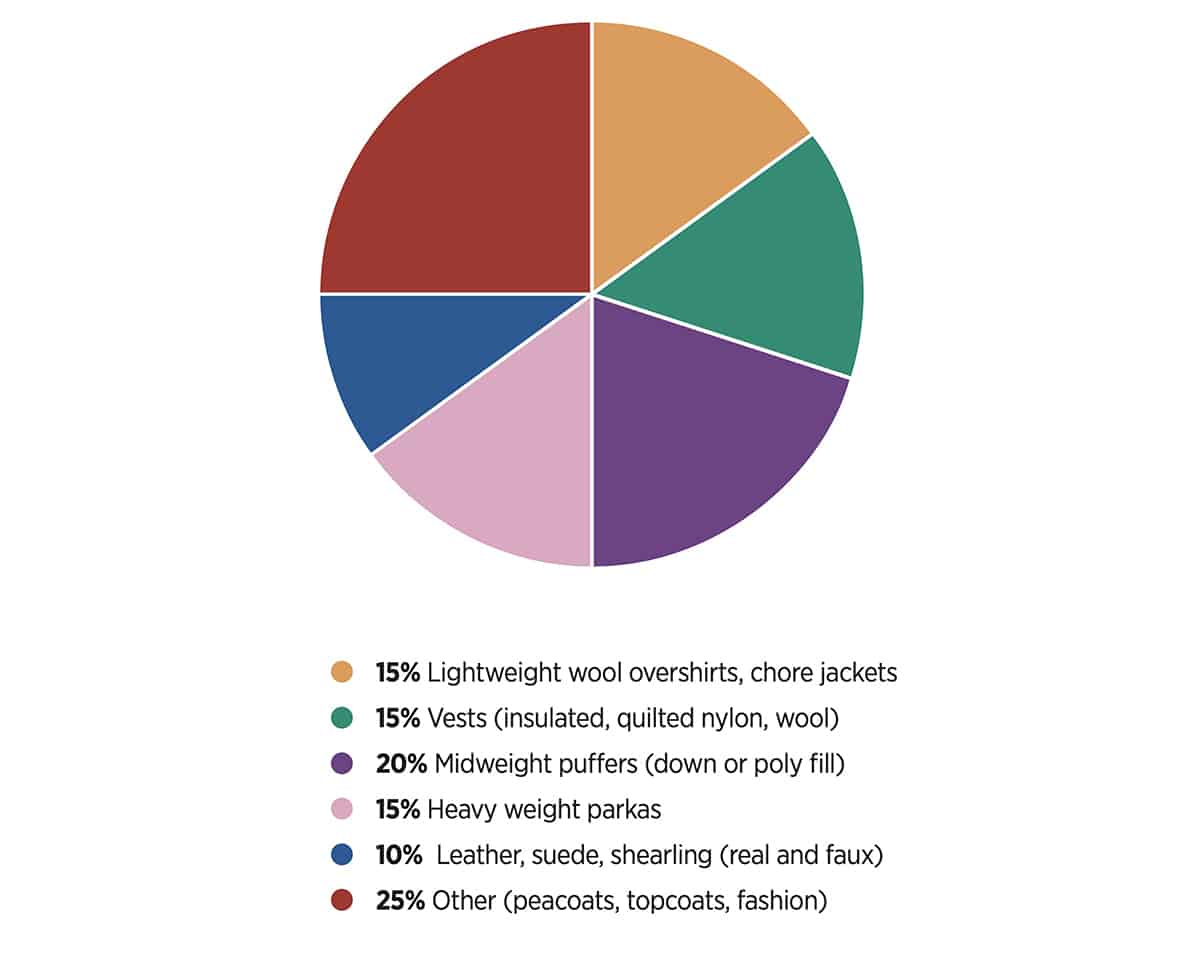
Ken Giddon from Rothman’s in New York reports strong sales this season with Parajumpers (“a bit cooler than most brands without being over the edge”), Serge Blanco (“well-priced with a French twist”) and poly-fills from Save the Duck (“still going strong”). He’s also had great reaction to a hybrid piece from LBM, essentially a sportcoat model with leather insert (about $1000 ticket price). In fact, during a Black Friday promotion, five of his customers fought over this item, vying for the honor of Who Wore It Best.
Says Giddon, “I believe fall ’23 will be a strong outerwear season for independent retailers because customers are confused about how to dress for work. They understand casual and they understand dress-up but can’t quite figure out office attire. That’s why specialty stores have the advantage: we offer stylists to explain what to wear with what and how outerwear figures into the overall fashion puzzle. Although we didn’t buy into topcoats for fall ’22 (except for one great model from TailoRed), we’re getting requests for them. I believe topcoats will be the comeback item for fall ’23.”
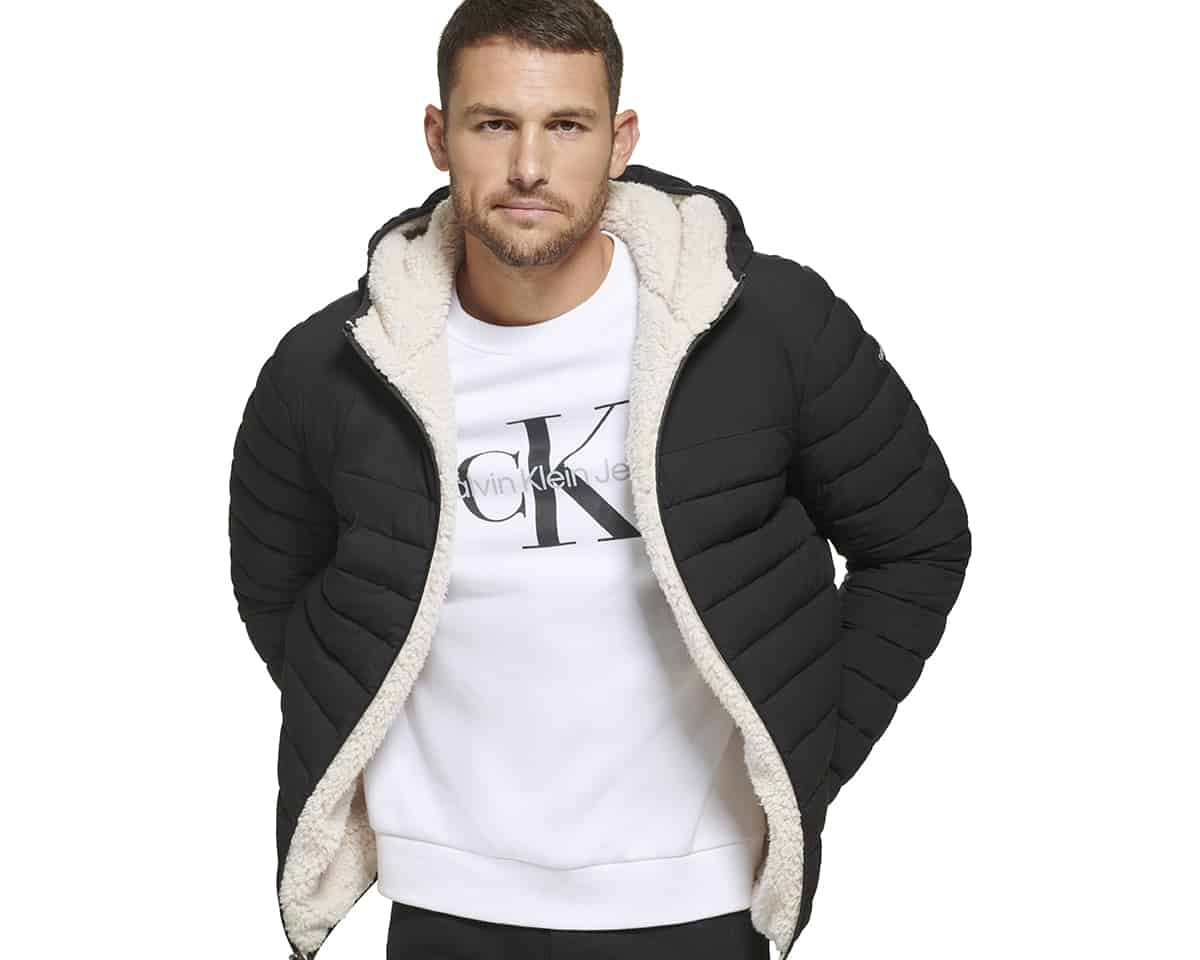
Dan Farrington at Mitchells Stores agrees. “We’re chasing demand in overcoats and dressier car coats: both were soft last year; we’ll have deeper assortments next year. Casual outerwear and puffers seem to have leveled off.
“Overall, our outerwear business for end-November was running even with last year. (Last year was our best year ever, so flat is something to be happy about!) Brunello Cucinelli, Loro Piana, Zegna, Kiton, and Moncler are driving topline right now. Demand is strong and sales might have been even better with deeper assortments, but supply/delivery issues still linger. We aren’t sure what traffic to expect in the pre-Christmas weeks, so we might end up in perfect inventory position.”
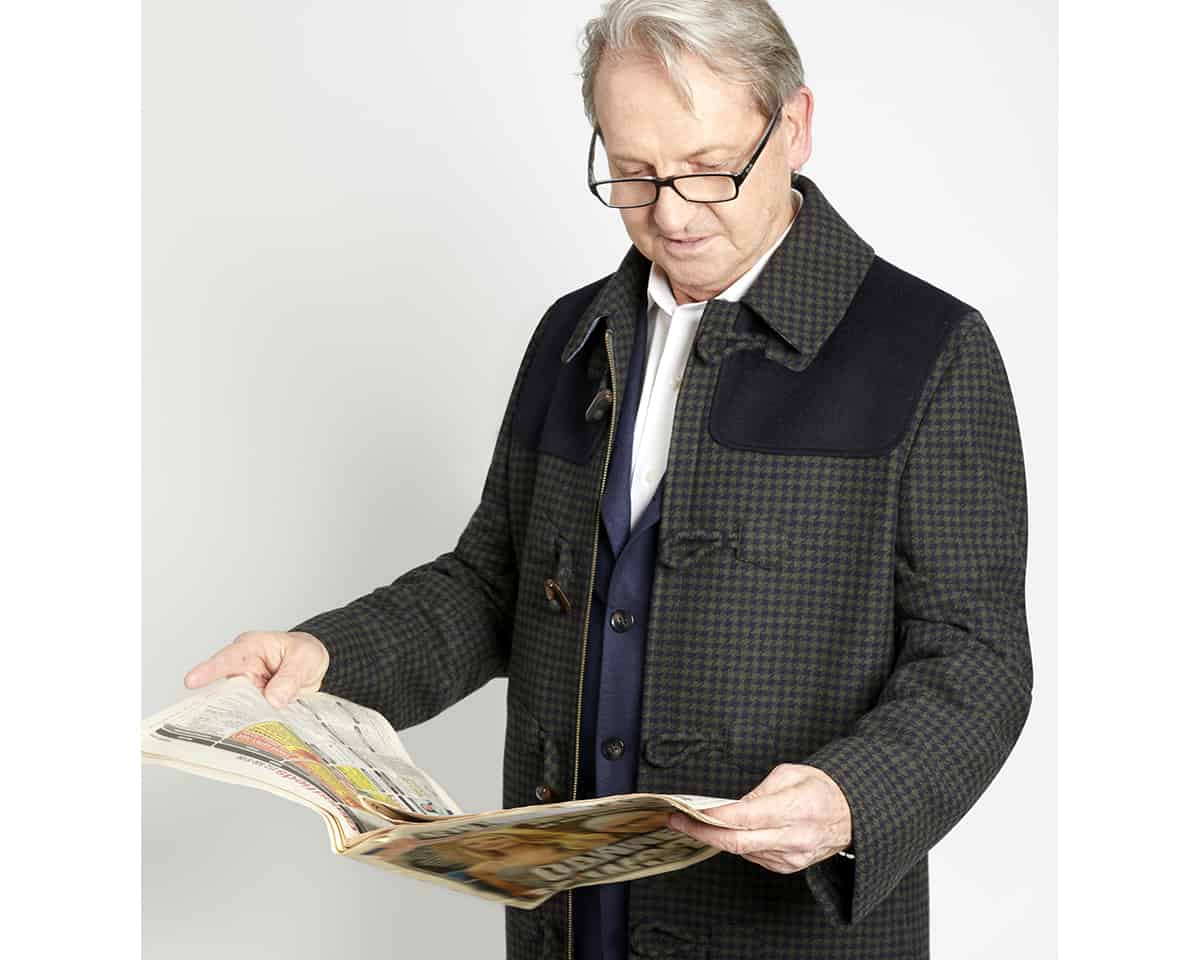
Shannon Stewart from Harry Rosen Canada is also leaning into topcoats, but with some reservations. “There’s no question the weather this fall/winter has changed the purchasing habits of our clients when it comes to outerwear. We’re definitely seeing more interest in topcoats, which aligns with the return to dressier business wear. At the end of the day, however, a topcoat is not suitable for a snowy weekend or a cold hockey arena! In the last weeks of November, sales in parkas picked up significantly with the change in our weather. Our customers now need several outerwear pieces to satisfy the various aspects of their lifestyles. For next fall, we’ll look at changing the balance and flow of our inventory to offer more appropriate weights for these new weather patterns, which I believe will continue.”
VENDOR VIEWS
Bottom line, buying outerwear is not just selecting the right fashion; outerwear business needs to be managed. Explains Casey Vieira from g-iii, “Retailers need to make decisions within strict financial guidelines, properly time deliveries, turn goods quickly, manage markdowns to meet both margin
and top-line sales, stay in regular touch with vendors to quickly execute re-orders, and correctly promote slower turning items as needed to keep stock levels in check and stay liquid.”
He stresses the importance of having the right inventory at the right time. “The sales trend was positive through mid-October, then it got warm and there was an unexpected slowdown that continued into November. Thankfully most retailers continued to flow product, rebalance assortments and bring in Q4-appropriate items like parkas. Our fastest turning items are modern, refined looks while our more casual assortment of puffers with unique detailing ($79.99 OTD, $89.99 for hooded version) and jackets with sherpa trim continue to drive volume. Wool is trending well: we expect shorter lengths in twills, herringbones and plaids and longer lengths in laminated melton to drive holiday sales.”
According to Peerless president Dan Orwig, best-booked styles for fall ’23 include a longer length peacoat in a blended wool melton, a fully water-repellent faux shearling, a 40-inch (just above knee) cashmere blend DB topcoat, below-the-knee topcoats (city coats) in interesting fabrics, a duffle stadium coat, and 36-inch all-weather coats. “While we’ve added several new models for fall 2023, topcoats are a best-booked item across all our brands,” he confirms. “It’s been the number one seller this season, generally in the $495-$695 retail range but priced higher for luxury fabrics: $895 in a Loro Piana all-wool and $1295 in all cashmere, both selling well. We project an even stronger season for fashion/luxury outerwear for fall ’23.”
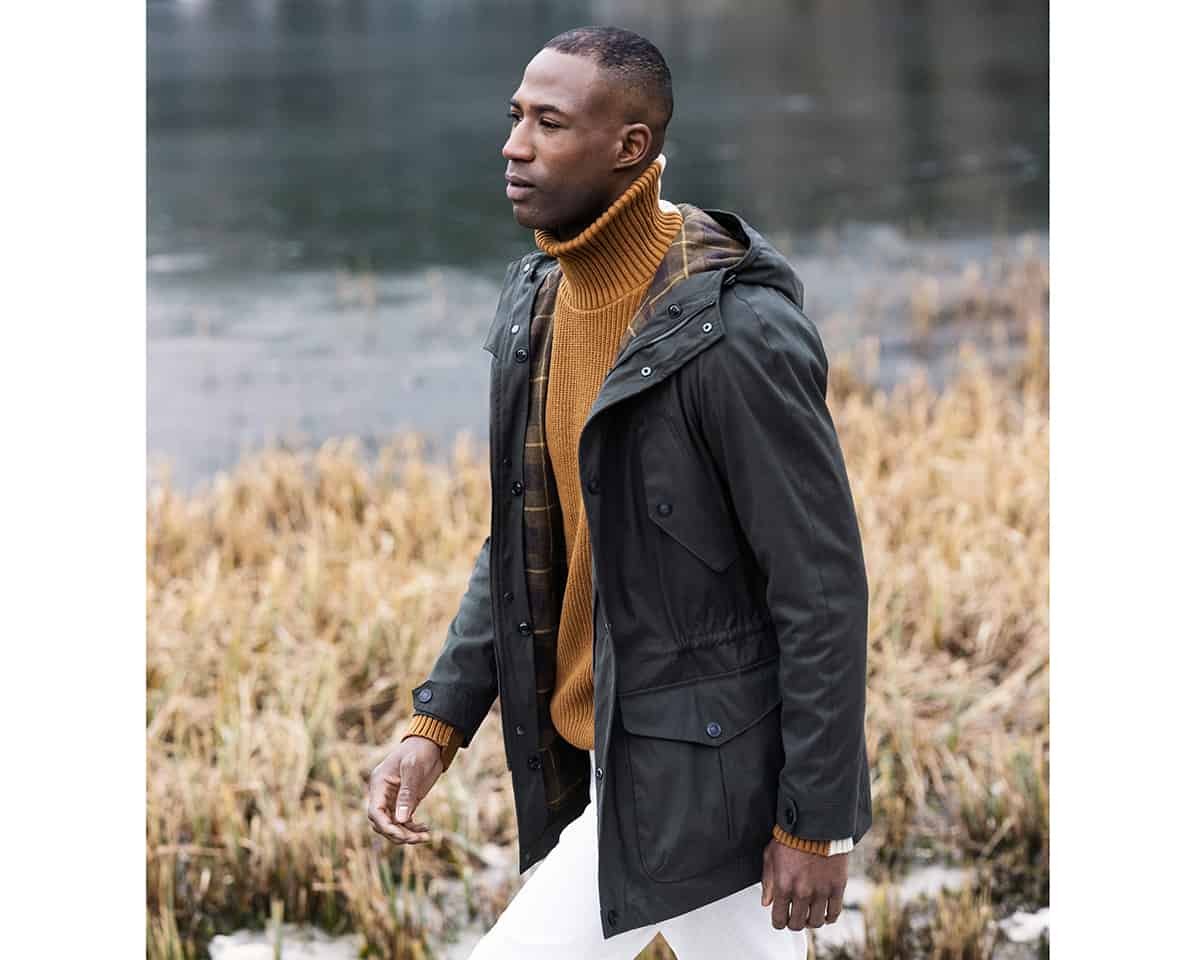
Now a division of Cashmere Outfitters, Cardinal of Canada 1938 has reinvented itself, maintaining the classic DNA of the brand but modernizing with softer, lighter weight fabrics, recycled insulation (Primaloft) and more generous fits. “We push the envelope on fabrics,” Cardinal’s designer/artistic director Antoine Charleboix explains, pointing to a Primaloft-lined rubberized model. Other on-trend items include a wooly brushed jersey knit, a Primaloft-lined raincoat with zip-out sleeve treatment, and (this editor’s favorite): a relaxed fit 40-inch DB camel topcoat, 80% wool/20% cashmere, that sold out at Nordstrom and Neiman’s well before Black Friday. “Because they’re much lighter weight than they used to be,” notes Antoine, “topcoats have become a layering piece, as stylish over a t-shirt as over a suit.”
Norwegian Wool prides itself on using interesting luxury fabrics like its waterproof wool herringbone coat with down insulation, $1500 suggested retail in wool, $2800 in pure cashmere. We love their waterproof wool/ cashmere shirtjac looks in two different weights, their wool bombers with down insulation and some stylish, sophisticated topcoats. Says founder Michael Berkowitz, who advertises via billboards on MetroNorth trains to Grand Central Station, “Men are clearly upgrading their office attire: now is not the time to dress like a schlump!”
Famous for their military-inspired sheep- skins and the leather pilot jacket worn by Tom Cruise in Top Gun and Top Gun: Maverick, the Cockpit business is now a blend of D2C (half their customers are international), military contract, and wholesale around the globe. Jacky Clyman notes that the Top Gun pilot jackets in kids’ sizes at $250 retail have been a surprise hit!
When Rainforest Inc divested the Rainforest trademark, Jack Wu was hoping to retire and play more golf. As it turned out, demand from key retailers has kept him in the outerwear business with the Thermo-Styles brand of modern field jackets with built-in heating systems. This proprietary technology allows the wearer to control the temperature inside the jacket via a universal USB rechargeable battery that plugs into a cord in the pocket. Wu points out that these “versatile and lightweight coats travel well, are a great alternative to heavy outerwear, and are selling well at Saks and select upscale stores. Suggested retails run from $156 for the fleece pullover to $700- $900 for true parkas.”

Using only certified Canadian white duck down and signature breathable membranes, Nobis claims “optimum fill power to warmth ratio by working with your body’s own heat to offer the perfect insulating environment against unpredictable elements.”
Save the Duck’s Seth Steinberg is proud that the brand was among the first to add sustainability to the outerwear equation, creating white space that others have jumped into. “We were pioneers,” he recalls, remembering when the brand launched 10 years ago. “Few cared about environmental impact or saving the planet back then. I remember first showing the collection to a group of Southern retailers who hated the logo and reminded me that they shoot ducks so why should they care about saving them… But today, people (especially young people) do care; they’re loyal to brands trying to make a difference.” He also notes that in 2019, Save the Duck was among the first Milan-based companies to receive the highest level of certification for social and environmental impact. Recently purchased by L’Occitane, the company is growing its B2C business and opening stores globally, including a New York flagship in Soho.•
Image, top: Modern Style from Cardinal of Canada 1938


